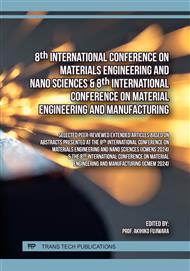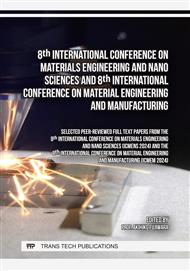p.53
p.59
p.65
p.71
p.79
p.87
p.93
p.99
p.105
CFD Simulation of a Circulating Fluidized Bed Boiler to Improve Air Distribution for Satisfactory Fluidization
Abstract:
This study focuses on the design of circulating fluidized bed (CFB) boilers, emphasizing optimizing the distribution of primary and secondary air to achieve better fluidization behavior, leading to better combustion performance. ANSYS Fluent is used to conduct Computational Fluid Dynamics (CFD) simulation using the Eulerian multiphase model and the standard k-epsilon turbulence model to model and analyze the fluidization in CFB. Performance evaluation metrics assess fluidization quality based on coal volume fraction, air and coal velocity, and pressure. The total air mass flow rate was set to be constant. In contrast, the primary and secondary air distribution variations were used: 40-60%, 50-50%, 60-40%, and 70-30% for primary (PA) and secondary air (SA), respectively. The criterion for choosing the optimal air distribution is based on the percentage of the bed height to the height of the furnace, the wind-box pressure which is to be maintained within the expected range to prevent overheating, as well as the amount of coal solids entering the cyclone, which can cause erosion. The simulation results show that the optimum air distribution values are 50-50 and 60-40. Other values cause problems, such as the formation of a fixed bed and vast amounts of coal entering the cyclone with high velocities.
Info:
Periodical:
Pages:
87-92
Citation:
Online since:
September 2024
Price:
Сopyright:
© 2024 Trans Tech Publications Ltd. All Rights Reserved
Share:
Citation:



